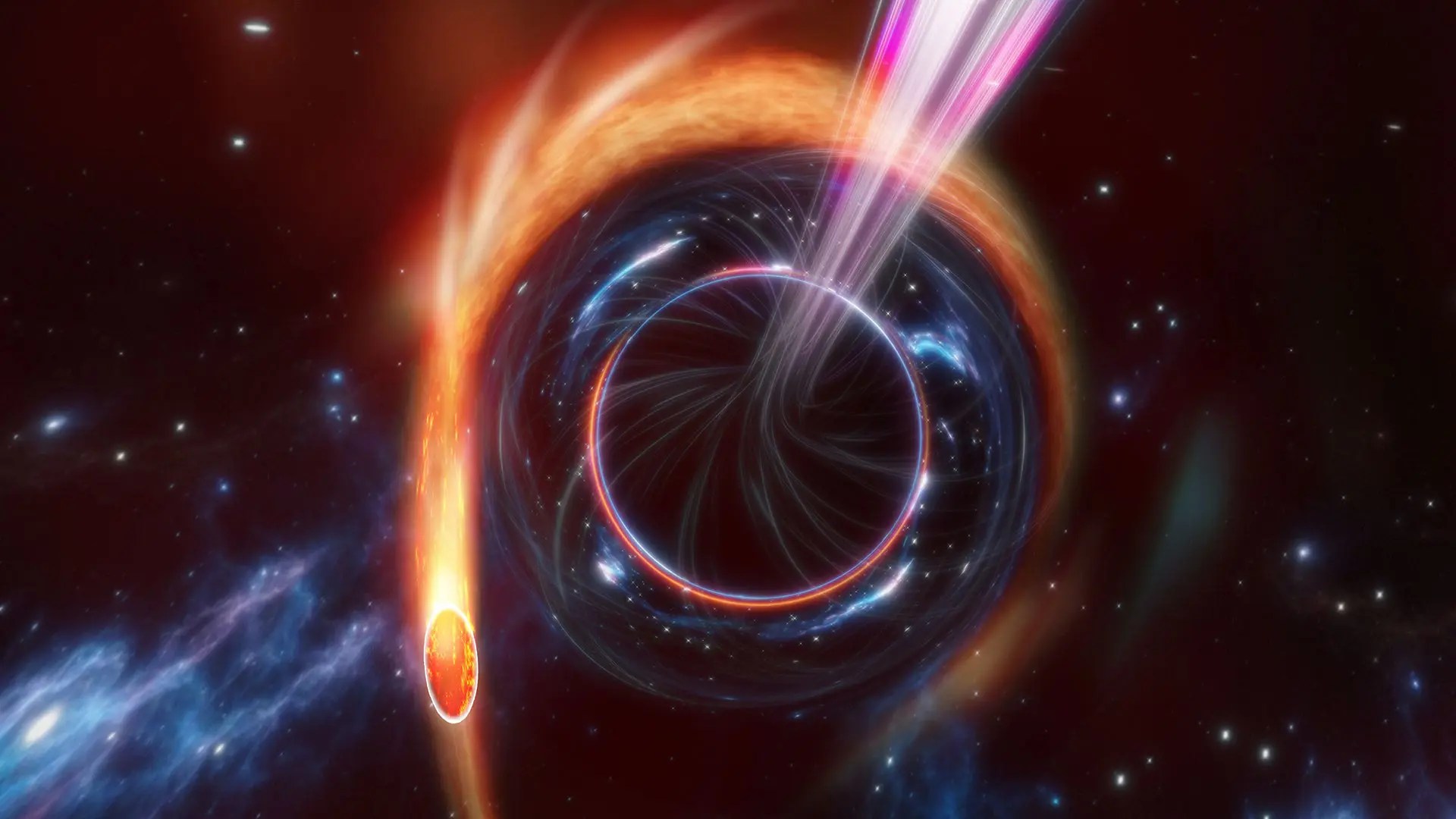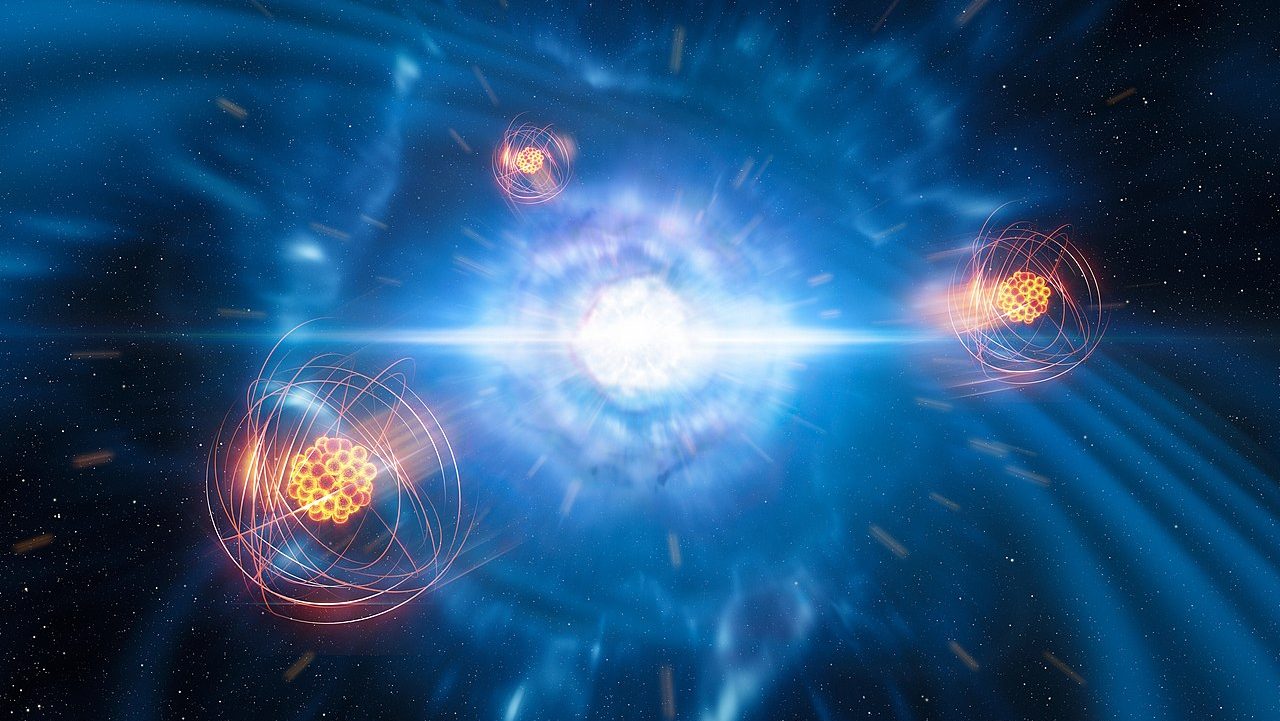When James W. Marshall struck gold in California in 1848, hundreds of thousands of prospectors headed west in hopes of striking it rich.
This week, explorers on the wild frontier found gold yet again . . . but don’t expect a repeat of the great gold rush, because this time it’s about 130 million light years away.
On Monday, scientists announced that, for the first time, they’ve observed two neutron stars colliding into each other, forming a kilonova and sending gamma rays streaming through space. The cataclysmic collision confirmed long-held theories that such an event would produce enough energy to create some of the universe’s heaviest elements—like gold, silver, and platinum. And that means “we have some ancient [neutron star] merger in the solar neighborhood to thank for the world’s store of gold and smartphones.”
“It is as if astronomers who, for millennia, have been watching the skies with the light coming from different objects suddenly got a new sense to look into the universe, combining sight and sound. The results of this newfound clarity promise new untold marvels.”
Professional and amateur astronomers around the world had their telescopes pointed toward deep space since the collision was first detected—via invisible gravitational waves—on August 17. They knew the unseen event would soon become visible, and that’s just what happened on Monday, October 16, when scientists around the world announced what they’d just seen—an event from 130 million years ago, when dinosaurs roamed the earth.
NASA produced a stunning animation to illustrate what happened with the neutron star merger. Phenomena include gravitational waves (pale arcs), gamma rays (magenta), ultraviolet (violet), optical and infrared (blue-white to red) emission, and X-rays (blue). Check it out:
Marcelo Gleiser, a professor of natural philosophy, physics and astronomy at Dartmouth College, is thrilled: “It is as if astronomers who, for millennia, have been watching the skies with the light coming from different objects suddenly got a new sense to look into the universe, combining sight and sound. The results of this newfound clarity promise new untold marvels.”
The University of Warwick’s Dr. Joe Lyman, watching from a German observatory, was one of the first to observe the event. He explained it is “powered by extreme nuclear reactions. This tells us that the heavy elements, like the gold or platinum in jewelry, are the cinders, forged in the billion-degree remnants of a merging neutron star.”
The space explosion likely produced trillions of tons of gold, according to this excellent article in Salon, which explains the complex physics of the event in easy-to-understand terms.
“It’s so beautiful, it makes me want to cry,” Peter Saulson of Syracuse University told NPR. Saulson described the event as a type of climax to more than 30 years of studying gravitational waves: “It’s the fulfillment of dozens, hundreds, thousands of people’s efforts, but it’s also the fulfillment of an idea suddenly becoming real.”
Alessandra Corsi, a radio astronomer at Texas Tech University, called it “a life-changing event.”
“It’s transformational,” astrophysicist Julie McEnery told The Washington Post. “The era of gravitational wave astrophysics had dawned, but now it’s come of age. … I think our level of understanding is going to leap forward as a result.”
If only Albert Einstein, who predicted the existence of gravitational waves a century ago, were around to see the proof of his theory. Three U.S. scientists won the Nobel Prize recently for finding a way to detect gravitational waves via the Laser Interferometer Gravitational-Wave Observatory, also known as LIGO.
But now, just months later, such waves are not only detected, but seen. Check out this video from European Southern Observatory, which explains the event and includes actual photos:
The post Striking Gold: When Neutron Stars Collide appeared first on ORBITER.





